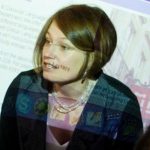The Vicious Causes of Prejudicial Judgment
 Paul Bloomfield (Associate Professor of Philosophy)
Paul Bloomfield (Associate Professor of Philosophy)
In general, judgments and/or beliefs are the product of natural and evolutionarily-selected mechanisms, such that if these mechanisms are properly functioning, then the judgments and beliefs they issue are reliably accurate, correct, or true. Prejudicial judgments are one of the chief causes of the breakdown of civil discourse, where “prejudicial judgments” are understood as ill-formed judgments which are the result of the malfunctioning of a person’s cognitive faculties due to endogenous yet distorting influences – vices – of a person’s character.
The proposal is to study the influence of moral character flaws, or moral vices, on these belief-forming mechanisms. The guiding thought is that these are character flaws which, in particular, cause us to commit the injustice of “prejudging” a case: to draw the wrong conclusion about a case as a result of bias or not giving it fair, full, and open-minded consideration. Different vices can have similarly unjust outcomes. Consider an analogous case from morality: There are two military quartermasters, one who steals chocolate from the troops to sell on the black market for profit and another who is a glutton who steals the chocolate to binge on it in a fit of weakness of will. Obviously, the injustice done to the troops in both cases is identical, though it is caused by two different character flaws: injustice and intemperance. In applying these lessons to epistemology, we can see that prejudicial judgment can be caused by either injustice or intemperance. Other vices, such as arrogance, servility, cowardice, recklessness, laziness, imprudence, etc., can also pervert one’s belief-forming mechanisms resulting in prejudicial judgment.
Everyday Modernism: The Senses and Barriers to Public Discourse (multi-media project)
 Anke Finger (Literature, Cultures, and Languages Department)
Anke Finger (Literature, Cultures, and Languages Department)
This project adds to a broadened understanding of human communication and public discourse that includes not just linguistic and visual media, but also the body, sensory perception and aisthetics. Specifically, the project investigates a pivotal turning point in media and cultural history by reinvestigating the traditional avant-gardes (Futurism, Dadaism, Surrealism) on the basis of the ‘ordinary’ or the ‘everyday’. Based on the scholarship of Madalina Diaconu, Yuriko Saito, Caroline Jones, Cecilia Novero, and others, the purpose is to uncover an everyday aisthetic within avant-garde movements and to expose and examine those senses, those modes and media of perception that, in a long aesthetic and philosophical tradition, have been marginalized: the senses of taste, touch and smell.
The emphasis lies in an intersensory and interarts approach to the avant-gardes and their media. Ultimately, the focus on taste, touch and smell will show that the avant-gardes sought to rupture a Western intellectual understanding of perception that was based on the distancing senses of sight and hearing. Their work, in contrast, broke through the barriers of public discourse by perforating the boundaries of sensory perception and the body, pointing to the senses as a communicative system underlying a thin veneer of civil and moral obedience. Today, these historical roots remain significant for our understanding of public discourses marked by the obfuscation of public and private, intellectual and emotional, mind and body, perception and fact – and for our own cognition of how our body and senses interact with the multiplicities that is everyday life. The final, and continuously evolving, multi-media product also serves as a log for the book project it accompanies.
Good citizen / Bad citizen: Civility discourse as symbolic boundary-work
 Ruth Braunstein (Assistant Professor of Sociology)
Ruth Braunstein (Assistant Professor of Sociology)
Widespread concern about the decline of civility in American political life has been met with calls for more civility in public debates and in institutional settings from universities to workplaces. Yet there is very little consensus about what behaviors and qualities count as “uncivil,” whether there has in fact been an uptick in these behaviors over time, and whether such behaviors are indeed problematic. While studies abound that seek to settle these complex questions by improving measurements of incivility and its effects, most overlook a more fundamental tension at the heart of this inquiry. Namely, when efforts to police the boundaries between civil and uncivil behavior trump concerns about full inclusion of a variety of voices and styles of expression, this can delimit rather than expand the potential for meaningful public discourse. After all, public debates about divisive issues are often contentious, and can provoke strong and emotional responses from individuals and groups that have a stake in the outcome. Some of these responses are bound to be viewed as uncivil, and this invariably prompts a shift from a debate about substance to one about form. Rather than asking whether these behaviors are, in fact, objectively uncivil, this project makes a case for examining these attributions of incivility themselves. More specifically, this project proposes shifting our lens from civility to civility discourse—the drawing of distinctions between civility and incivility. Through a review of theoretical and empirical work on political incivility, an original experiment, ethnographic fieldwork, and a series of case studies, it asks whose behaviors are most likely to be viewed as uncivil, and by whom; and what the effects are of these judgments, on both political actors and the political system as a whole. In so doing, it aims to shed light on the subtle and often unintended ways in which this civility discourse can result in the marginalization, exclusion or expulsion of certain kinds of political actors (and certain kinds of political action) from public debates.
Drive-Through Democracy? Public Deliberation and the New England Town Meeting in Connecticut
 Michael Morrell (Associate Professor of Political Science)
Michael Morrell (Associate Professor of Political Science)
One of the oldest institutions of direct democratic participation by citizens is the New England Town Meeting. Despite its unique status, there have only been a handful of studies of this form of democracy during the past 40 years. While all forms of the New England Town Meeting in Connecticut involve direct participation by citizens, there are many variations in how different towns institutionalize this participation. Some towns retain the traditional form of the town meeting in which citizens meet together to decide issues that confront the town, especially passing the town budget. Some towns have adopted a Representative Town Meeting (RTM) format in which citizens elect a small assembly to act for the rest. Some towns still have an annual budget meeting at which they discuss the town budget, but then adjourn to an all-day referendum where citizens vote whether to approve the proposed budget. Finally, some towns use different hybrid forms of these various options. While this variation makes studying the town meeting in Connecticut complex, it also opens an opportunity. The goal of this project is to help fill the lacunae in our understanding of the Town Meeting by examining the public discourse surrounding proposed changes to the democratic forms towns use in deciding whether to pass their town budgets. It is at these moments that citizens give reasons for accepting or rejecting different forms of democracy for their towns, and as such, can provide insight into how public deliberation and the use of reasons functions in the face of fundamental questions about which citizens disagree and can illuminate how citizens understand the basic idea of democracy.